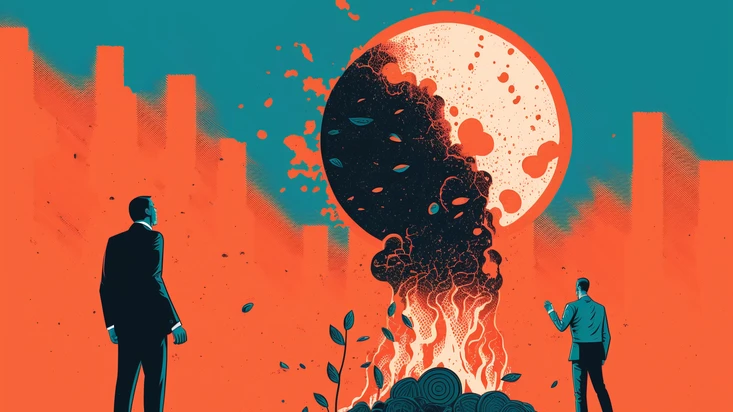
SVB Crash: USDC is Back!
Thanks to machinations by the one who shall not be named, USDC’s price has recently dropped to an all-time low of 88% thanks to SVB’s fail. But it’s back!
Who’s SVB and How banks work?
In order to understand why USDC fell so dramatically, we need a brief detour into how banks work.
How do banks make money? In plenty of ways, including taking your money, buying assets, and selling them to make a profit. Banks want to minimize risks and maximize potential returns, so they often go in for a <normally> safe choice: bonds.
Why is this important? USDC is a currency developed by Circle, whose funds were at a bank called Silicon Valley Bank.
The bank Circle had money in was unable to complete a transfer of $3.3 Bn, causing reputational damages for Circle and a very dramatic drop in price of USDC token.
Stablecoins are not supposed to do that, as many in the industry rightfully pointed out and already breathed in hard to start a massive panic, but…just in time, Circle, after being severely let down by a friend and experiencing initial shock, remembered that it’s a massive company valued at billions who’s easily capable of managing the loss, and issued a statement to the effect of “My God, would you calm down already, everything is fine!”.
After the drop in price and the ensuing weak panic everyone came to their senses and realized that the money isn’t missing, the USDC stablecoin is still a functioning coin and it’s still stable, more or less, that users will get their money back, and that there’s actually no need to freak out.
Now, there is a healthy chance the below passage was quite confusing, because the mechanism behind it is quite complicated (as all bank systems are), so we’ll give you a quick technical explanation followed by a long explanation by the awesome folks at CoinBureau.
We’ve also provided some context without which it’s not easy to understand what really went on.
What?
- Nov. 11, 2022 a major crypto exchange called FTX failed because of a surge of customer withdrawals. There were also rumors of the owner manufacturing his own brand of assets that weren’t backed and thus were worthless, but is the USD backed by anything? Is BTC?
Now, unless you’re sick to your stomach of another FTX bankruptcy explanation video…
you can watch the long explanation here:
- One of the very few banks in the industry that support crypto, Silvergate, fails, for mysterious reasons, one of them being that one of its biggest clients, FTX, failed.
- One of the very few banks in the industry that works with crypto called Silicon Valley Bank fails to process its $3.3 Bn transaction, causing Circle’s token USDC to lose value. The cited reason is a bank run (too many clients want to withdraw at the same time), but actually the reason for a surge of customer withdrawals was in part the US Federal Reserve hitching up the interest rate, which made SVB’s clients need money, making them go to the bank and mass-withdraw, simultaneously making the assets the bank had at the time cheaper. SVB needed money to give to its clients, and thus it was forced to sell the bonds it had for a much cheaper price, after which it went broke and closed down. Or actually was closed down by the government as it was trying to save itself.
What is the interest rate and how does the FED influence it?
The interest rate is a number that represents the cost of borrowing money. The Federal Reserve (FED) influences the short-term interest rates, but not the long-term ones. The FED does this by changing how much it pays banks for deposits and charges on loans, which changes the supply of money in circulation. This can also be done by buying or selling U.S Treasury securities from or to commercial banks through open market operations.
In other words, the interest rate is the cost of borrowing money. It's what we have to pay if we want someone else to lend us money, or use our savings. The Federal Reserve Board (FED) sets this interest rate. They do this by setting a target range for the federal funds rate, which they control with open market operations-buying and selling U.S. Treasury securities in exchange for bank reserves held at the Fed.
Recap
Was that complicated? Good job we’ve got those civilized guys at The Coin Bureau to go into it at length!
The takeaway here is:
✓ FTX failed (bank run)
✓ Silvergate failed (bank run because of the FTX fail)
✓ SVB failed (bank run).
The Fed standing the most to gain from crypto’s collapse is, of course, just a coincidence. Hmm...
How USDC recovered
Now USDC is back at a healthy level of $0.999.
So, unless you panic-sold $2 000 000 of your USDC for $0.05, everything is just fine. Like we always said, HODL!
And by that we mean that according to statistics, holding crypto actually outperforms trading it in the very long run. And DYOR, of course.

















